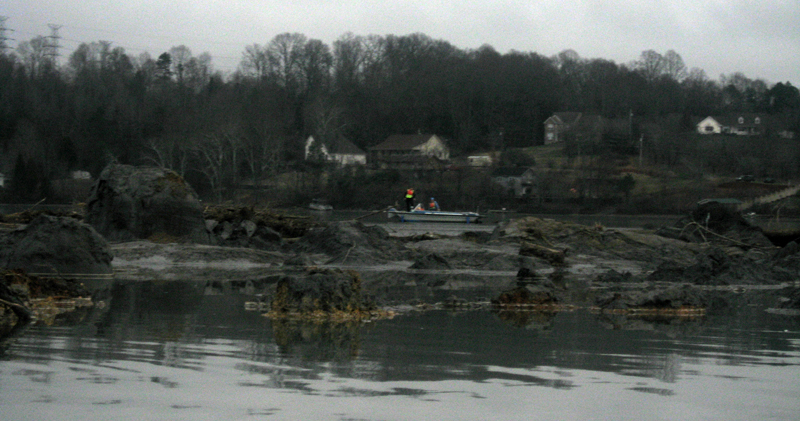AV's Intern Team | December 19, 2014 | No Comments

The dam holding more than one billion gallons of coal ash waste at Tennessee Valley Authority’s Kingston Fossil coal-fired power plant collapsed on Dec. 22, 2008. Photo courtesy of Appalachian Voices
As an assortment of pollutants leach into our lives, the harmful effects continue to surface in public health. Yet many questions about environmental contaminants remain difficult to study, such as long-term health effects of low-level exposure, and how these different chemicals interact in the environment.
At every stage in the life-cycle of fossil fuels — mining or drilling, transportation, processing and use — toxic waste contaminates land, air and water. And at the same time that pesticides have allowed food production to expand, these same poisonous chemicals may affect every life form on Earth, from bacteria to humans.
By Kimber Ray
FRACKING |
The last decade has seen a rapid expansion of the drilling method known as hydraulic fracturing, or fracking. Sand and chemicals — including known carcinogens — are mixed with water and injected deep underground to extract natural gas from shale rock formations. Yet many chemicals remain unknown because companies may claim them as trade secrets… [Full Story] |
PESTICIDES |
Whether in food, water or air, current research suggests that no corner of the global environment is spared from pesticide contamination — not even the bacteria and fungi needed to regenerate soil. Pesticides include popular products such as insecticides, herbicides, fungicides and rodenticides. Many properties and impacts of these chemicals remain unstudied…[Full Story] |
MOUNTAINTOP REMOVAL COAL MINING |
Nearly 650 mountaintop removal coal mining sites scar the landscape of central Appalachia. Neighboring communities experience greater levels of air and water pollution and suffer from higher rates of illness than similar communities located further away, says Dr. Michael Hendryx, a professor of applied health science at Indiana University who has contributed to more than 30 studies on the subject…[Full Story] |
CLIMATE CHANGE |
Much of Appalachia is predicted to experience increased temperatures and precipitation over the coming decades, with temperatures rising by four to nine degrees Fahrenheit and fewer — but more intense — storms interspersed with short droughts…[Full Story] |
COAL COMBUSTION |
Coal is currently the largest source of global energy. When coal is burned, its carbon, hydrogen, oxygen, sulfur, nitrogen and trace metals combine to form greenhouse gases such as carbon dioxide, methane and nitrogen oxides. Other emissions include sulfur dioxide gas, which can contribute to acid rain and respiratory diseases, particulate matter, which can cause lung and heart disease and mercury gas, a neurotoxin…[Full Story] |
Like this content? Subscribe to The Voice email digests